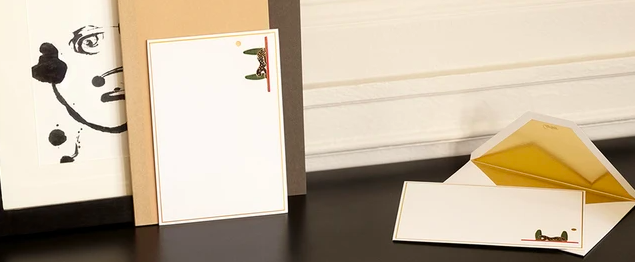The Art of Stationary
We have a weakness for handwritten invitations, menus and place settings on beautiful paper. In fact, we have a weakness for wonderful stationary which is why the art of the invitation is something that is close to our hearts. We explored this topic during our last live with Kathleen Jones - feel free to catch up on our IGTV - and have found some fun facts about the history of this aspect of hosting.
The history of stationary
The paper-making process is thought to have begun in China, in the Han period 25-220 CE and moved across the world, reaching Europe in the 11th century. Paper was quite often used for wrapping (which is where the tradition of wrapping paper grew from) and played a huge part in developing writing cultures.
Skip forward a few centuries to the Middle Ages and we being to see paper being used for invitations by the elite who commissioned monks (highly skilled in calligraphy) to scribe them. In the 1600s engravings became a popular way for creating invitations, hand engraved and printed. During this time and into the 1700s, invitations were delivered on horse back (the postal system was new and unreliable) and the double envelop tradition was born to protect the invitations from damage as they travelled.
The word stationary refers to the products sold at a ‘stationer’, a book shop that was on a fixed (stationary) spot which was unusual at the time in Europe, in 13th-15th century, as most people peddled their wares on moveable carts.
Before and after dinner
With all the technology and ways to communicate these days it is easy to forget about the beauty of a handwritten invitation arriving in the post. For formal events always use black ink, but for an intimate dinner party at home with friends you can have a little more fun - try coloured ink to match your table setting; green is becoming a modern classic!
For any event that guests may need to travel to, it is polite to send your invitations at least six weeks in advance. When hosting a dinner party for friends two weeks is an appropriate timeframe.
A thank you note is a great excuse to use beautiful stationary, and the correct etiquette after dinner party. Kathleen recommends sending one along with a small and personal gift - something as simple as printing out a family recipe that you spoke with your host about.



